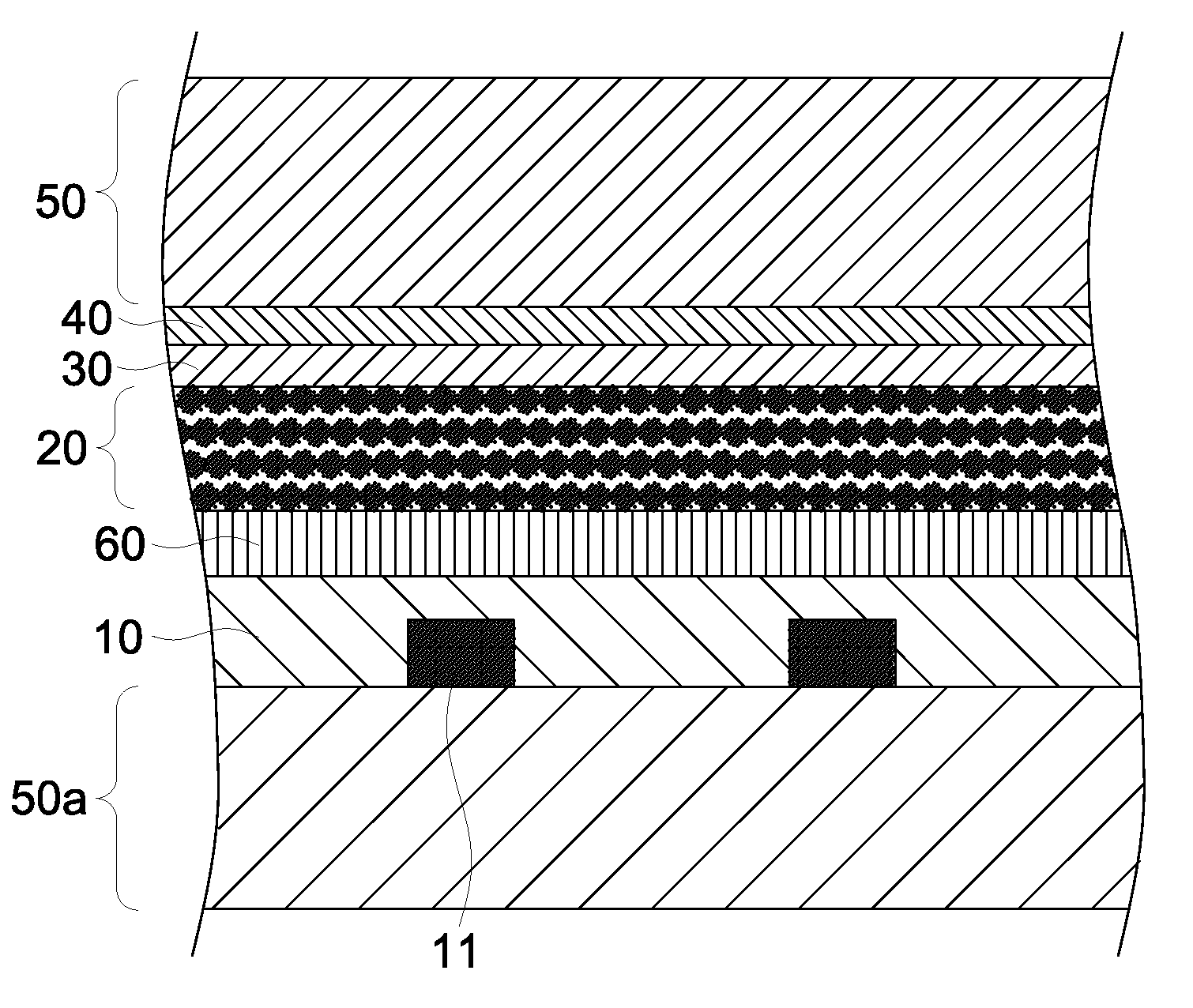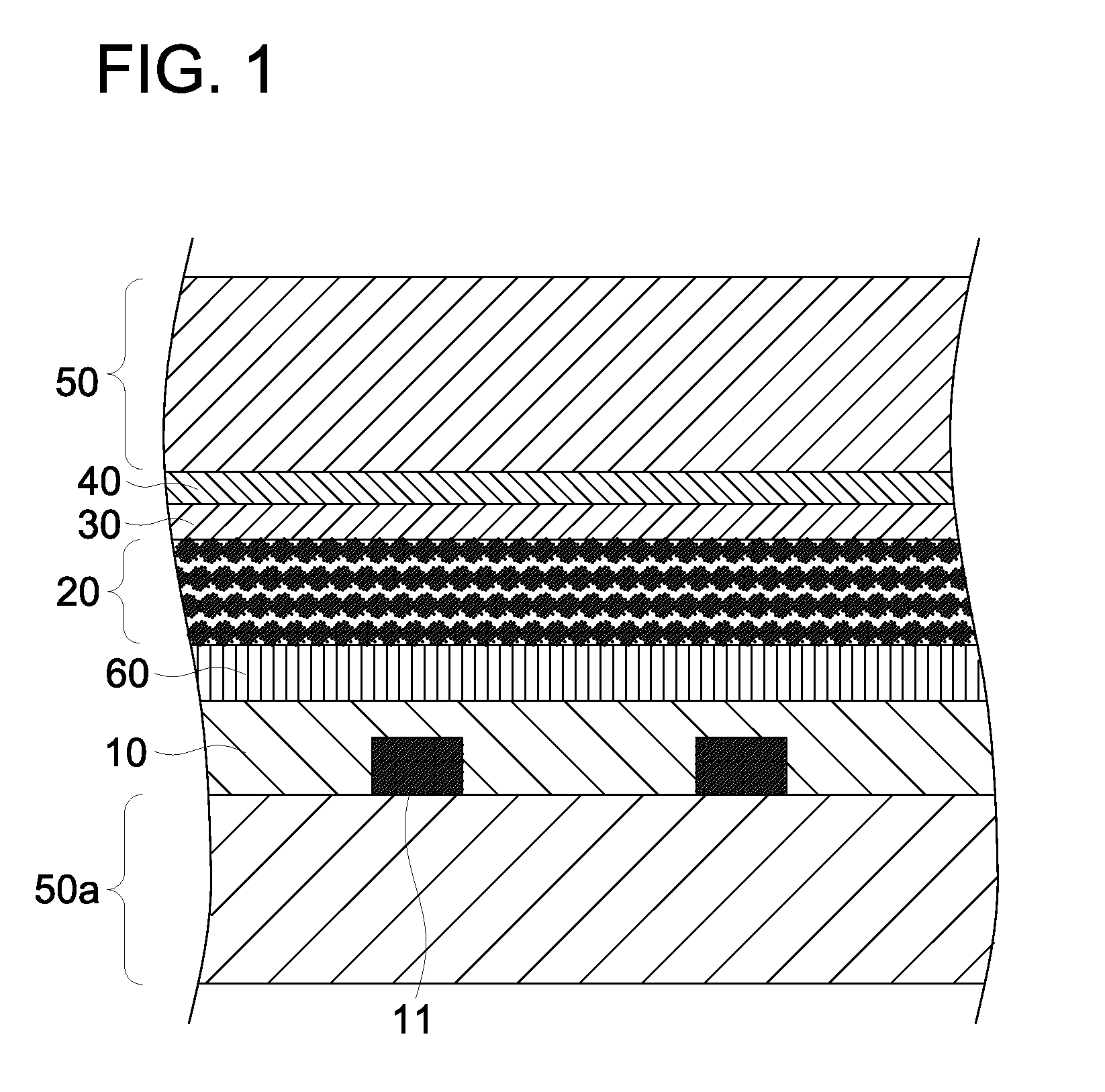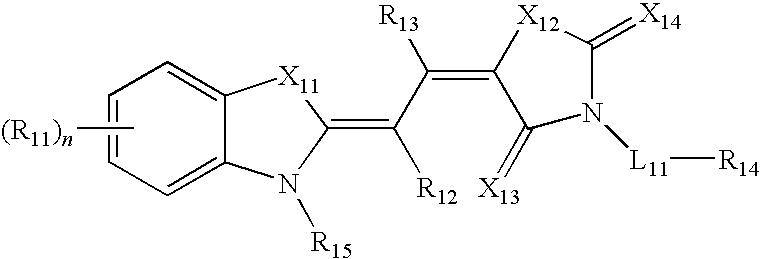Dye-sensitized solar cell
- Summary
- Abstract
- Description
- Claims
- Application Information
AI Technical Summary
Benefits of technology
Problems solved by technology
Method used
Image
Examples
example 1
[Preparation of Conductive Base]
>
[0153]On one side of a biaxial stretching PET base support having a thickness of 200 μm was performed a corona discharge treatment with 12 W·min / m2. An under coat coating solution B-1 was applied so that it might become a dried layer thickness of 0.1 μm, then a corona discharge treatment of 12 W·min / m2 was performed on it, and an under coat coating solution B-2 was applied so that it might become a dried layer thickness of 0.06 μm. Then, a heat treatment was performed at 120° C. for 1.5 minutes to obtain a PET film base support provided with an under coat layer.
(Under coat coating solution B-1)A copolymer latex made by 20 weight parts of styrene,50g40 weight parts of glycidyl methacrylate and 40 weightparts of butyl acrylate (solid content 30%)SnO2 sol (A)440gCompound (UL-1)0.2gWater to make up to1,000ml(Under coat coating solution B-2)Gelatin10gCompound (UL-1)0.2gCompound (UL-2)0.2gSilica particles (an average diameter of 3 μm)0.1gHardener (UL-3)1gW...
PUM
 Login to View More
Login to View More Abstract
Description
Claims
Application Information
 Login to View More
Login to View More - R&D
- Intellectual Property
- Life Sciences
- Materials
- Tech Scout
- Unparalleled Data Quality
- Higher Quality Content
- 60% Fewer Hallucinations
Browse by: Latest US Patents, China's latest patents, Technical Efficacy Thesaurus, Application Domain, Technology Topic, Popular Technical Reports.
© 2025 PatSnap. All rights reserved.Legal|Privacy policy|Modern Slavery Act Transparency Statement|Sitemap|About US| Contact US: help@patsnap.com



